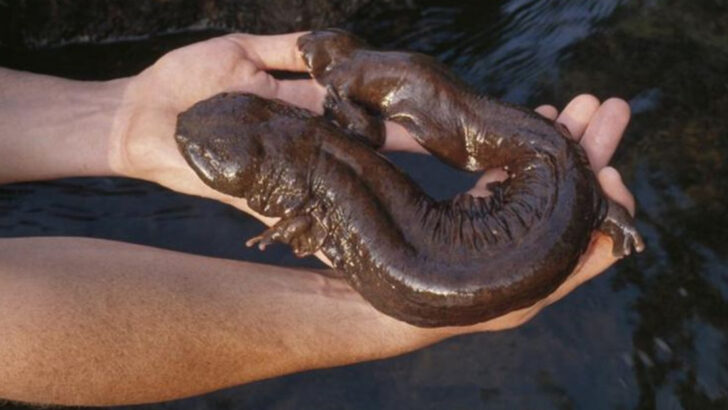Think you’ve got American wildlife all figured out? Think again. You might know the bald eagle and the bison—but what about the deer that climbs trees? Or the frog that freezes solid in winter and still comes back to life? The United States is crawling, slithering, and soaring with creatures that seem straight out of science fiction. Some can change colors. Some play dead so well, they trick predators and people. And others? They’ve developed wild tricks to survive in the most brutal places on Earth. These aren’t your average backyard critters. They’re weird. They’re clever. And they’ll flip everything you thought you knew about American animals on its head. Get ready to meet the wildlife that plays by its own rules.
Axolotl
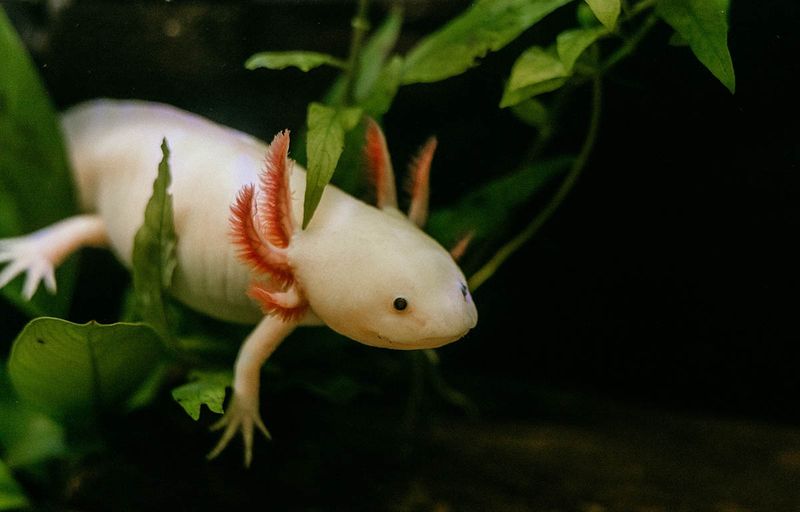
Meet the axolotl, a salamander that never grows up! This fascinating amphibian retains its juvenile features throughout its life, including its feathery external gills. Native to the lakes of Mexico, it has found a home in the U.S. as a pet and research subject. Its ability to regenerate lost limbs is truly remarkable.
Despite its exotic appearance, the axolotl is a relatively easy pet to care for. However, its wild population is now critically endangered. Conservation efforts are underway to protect its natural habitat and ensure this peculiar creature doesn’t disappear forever.
American Bison
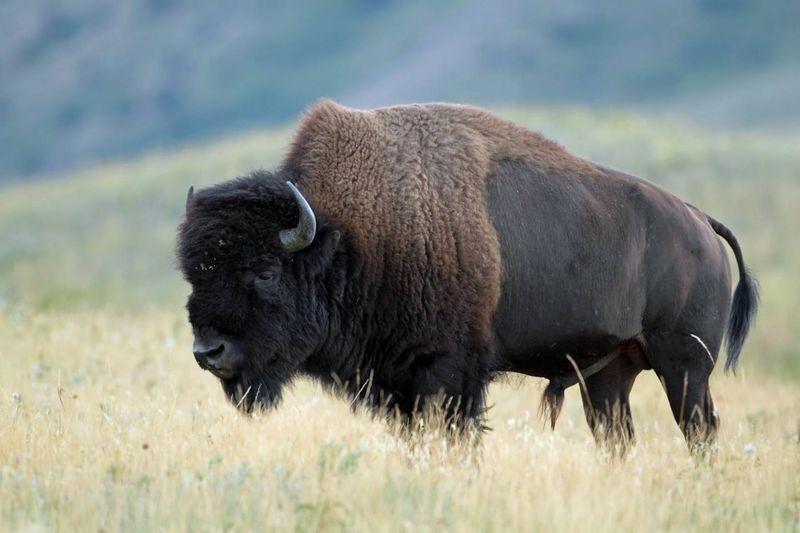
Once roaming in massive herds, the American bison is a symbol of the Great Plains. Its massive frame and iconic hump make it instantly recognizable, yet many are unaware of its near-extinction in the late 1800s. Thanks to conservation efforts, the bison has made a comeback and can be found in protected areas across the U.S.
These gentle giants play a crucial role in their ecosystems by maintaining the grasslands. Watching a herd move across the plains is a reminder of the country’s wild heritage. They’re not just animals; they’re living history.
Pika
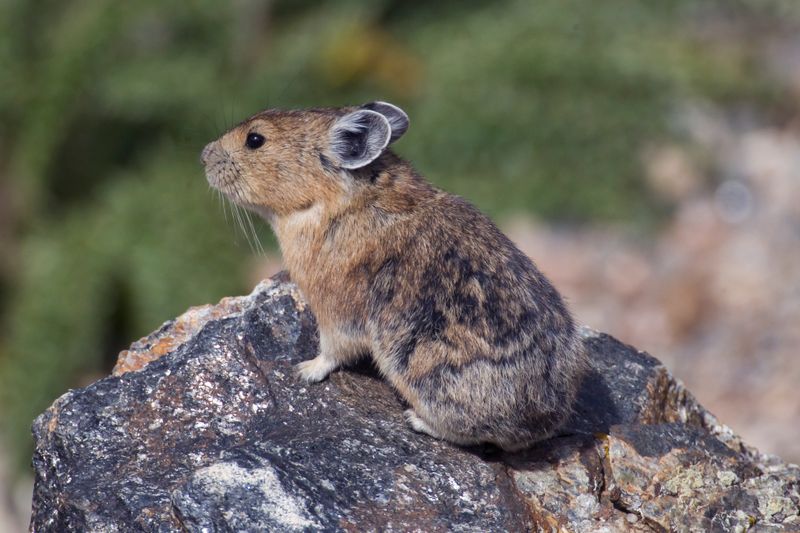
What the pika lacks in size, it makes up for in tenacity. Nestled in the rocky outcrops of the American West, these small mammals are known for their distinctive ‘eek’ call. Related to rabbits, pikas do not hibernate, instead gathering food to last through harsh winters.
Climate change poses a threat to their survival, as rising temperatures force them to higher altitudes. Despite these challenges, pikas continue to thrive in their alpine environments. Their perseverance and adaptability make them a true testament to nature’s resilience.
California Condor

The California condor, with its impressive wingspan, is North America’s largest flying bird. Once on the brink of extinction, with only 27 individuals remaining in the 1980s, it has been brought back through intensive conservation efforts. These scavengers play a vital role in their ecosystems by cleaning up carrion.
Condors are a symbol of hope, demonstrating that dedicated conservation can bring species back from the edge. Seeing one in flight is an awe-inspiring experience, a reminder of nature’s grandeur and the importance of preservation efforts.
Red Wolf

The red wolf, a unique symbol of the American wilderness, is distinct from its more famous cousin, the grey wolf. Native to the southeastern U.S., it is critically endangered, with fewer than 30 individuals left in the wild. Conservationists work tirelessly to protect its habitat and increase its numbers.
This elusive predator plays a key role in controlling the populations of prey species, maintaining the ecological balance. Each sighting is a rare gift, a glimpse into the wild heart of America’s forests.
Gila Monster

The Gila monster, with its striking orange and black pattern, is one of the only venomous lizards native to the U.S. Found in the arid deserts of the Southwest, its slow movements and stout body are deceptive; it is a skilled hunter of small prey.
Its venom, while potent, is not typically lethal to humans. Instead, it serves as a tool for subduing prey. The Gila monster’s unique appearance and behavior make it a fascinating subject for researchers and wildlife enthusiasts alike.
Manatee

Gentle giants of the waterways, manatees are a beloved symbol of Florida’s coastal regions. With their large, paddle-shaped tails and whiskered faces, they are often seen grazing on aquatic plants. Manatees play a significant role in their ecosystems by maintaining the health of seagrass beds.
These marine mammals face threats from boat strikes and habitat loss. Conservation efforts have helped stabilize populations, but continued vigilance is needed. Watching a manatee in its natural habitat is a tranquil experience, a reminder of the delicate balance of marine life.
American Woodcock
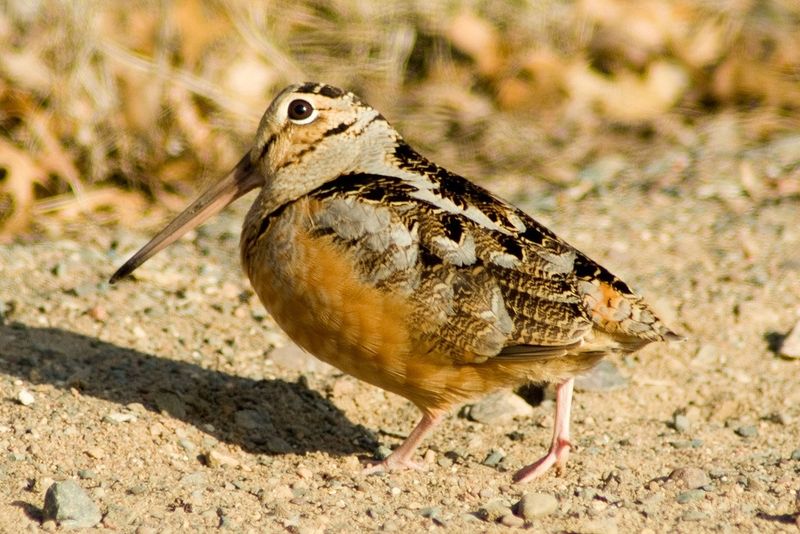
The American woodcock is a master of camouflage, blending seamlessly into its forest floor habitat. Known for its ‘sky dance,’ this bird’s courtship display involves spiraling flights and melodic chirps. Its long, flexible beak is perfectly adapted for finding earthworms in the soil.
Despite its unassuming appearance, the woodcock is a favorite among birdwatchers. The enchanting sky dance, performed at dawn and dusk, is a sight to behold. This bird’s unique behaviors and adaptations make it a fascinating member of the avian world.
Hellbender
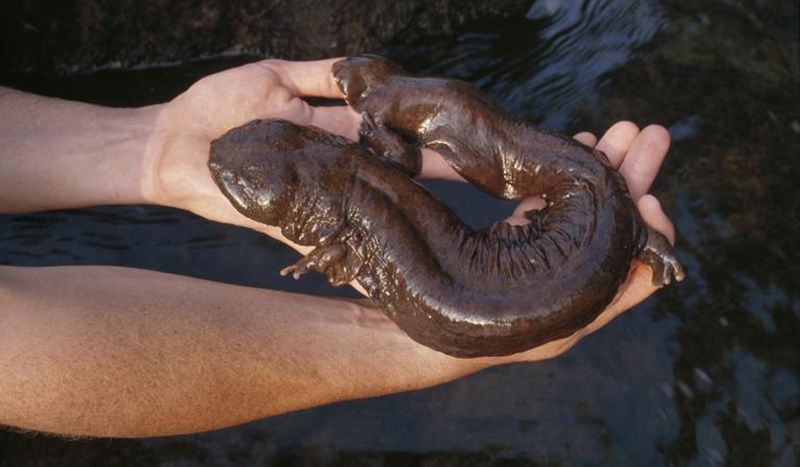
Known as the ‘snot otter,’ the hellbender is North America’s largest salamander. Found in the clean, fast-flowing streams of the eastern U.S., it is a master of stealth and survival. Its wrinkled skin aids in breathing through water, allowing it to thrive in its aquatic environment.
Threatened by pollution and habitat destruction, the hellbender’s presence indicates healthy waterways. These ancient creatures are vital to maintaining ecological balance, consuming large numbers of insects and small fish. Their existence is a testament to the diverse life hidden in U.S. waters.
Ocelot
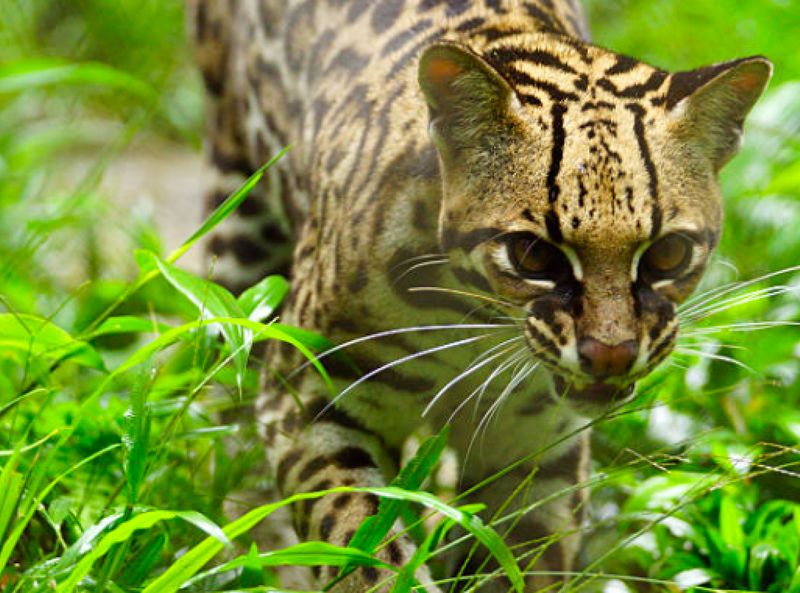
The elusive ocelot, with its striking spotted coat, is a rare sight in the U.S. Found mainly in southern Texas, these nocturnal predators are skilled hunters, stalking small mammals and birds under the cover of darkness. Their presence in the U.S. is limited to protected areas, making sightings rare but rewarding.
Ocelots are a reminder of the biodiversity found in the border regions. Conservation efforts aim to protect their habitats and ensure their survival. These cats add an exotic touch to the American landscape, captivating all who glimpse them.
Snowy Owl
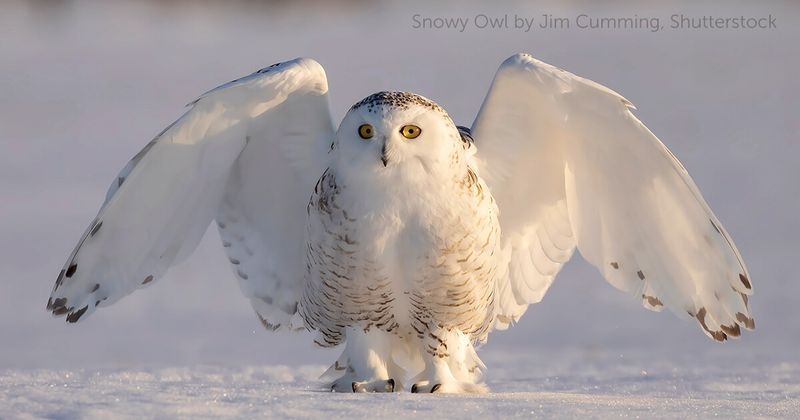
The snowy owl, with its striking white plumage, is a winter visitor from the Arctic tundra. Its piercing yellow eyes and silent flight make it a masterful hunter, blending with the snowy landscapes of the northern U.S. during the colder months.
These owls travel south during the winter in search of food, often drawing attention from bird enthusiasts and photographers. Their presence adds a touch of wilderness to the wintery American countryside, a living connection to the distant Arctic.
Alligator Gar

The alligator gar is a prehistoric-looking giant of the southern waterways. With its elongated snout and sharp teeth, it resembles its reptilian namesake. Found in the slow-moving rivers and bayous of the southeastern U.S., this fish is a top predator in its ecosystem.
Despite its fearsome appearance, the alligator gar is not a threat to humans. In fact, it plays an important role in controlling fish populations. Anglers often seek them for their size and strength, adding to their legendary status in southern folklore.
Pronghorn
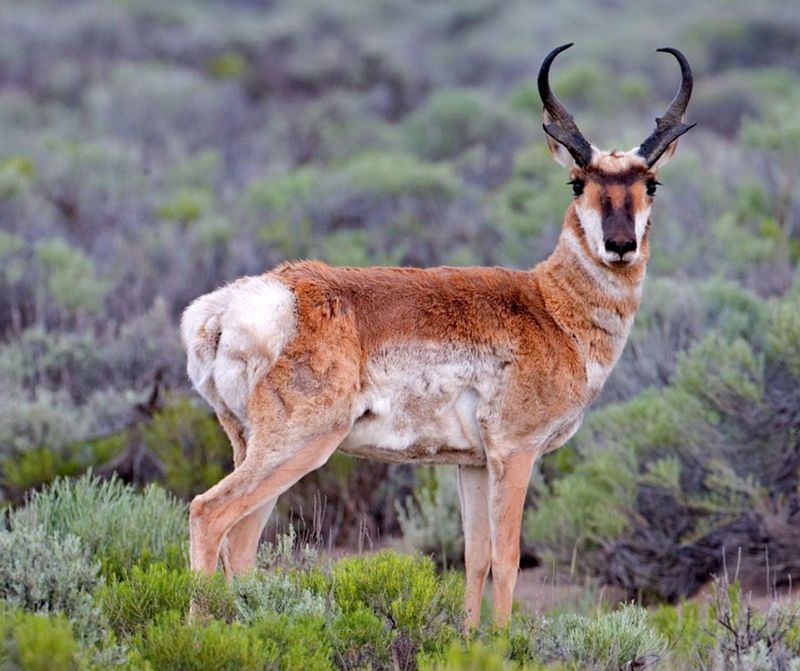
Pronghorns, often mistaken for antelopes, are the fastest land animals in North America. Capable of reaching speeds up to 55 mph, they roam the open prairies and deserts, their keen eyesight detecting predators from afar.
These unique creatures are a remnant of the Pleistocene era, having outlived many of their contemporaries. Their incredible speed is a survival trait, developed to escape ancient predators. Seeing a pronghorn in motion is witnessing evolution in action.
Coyote
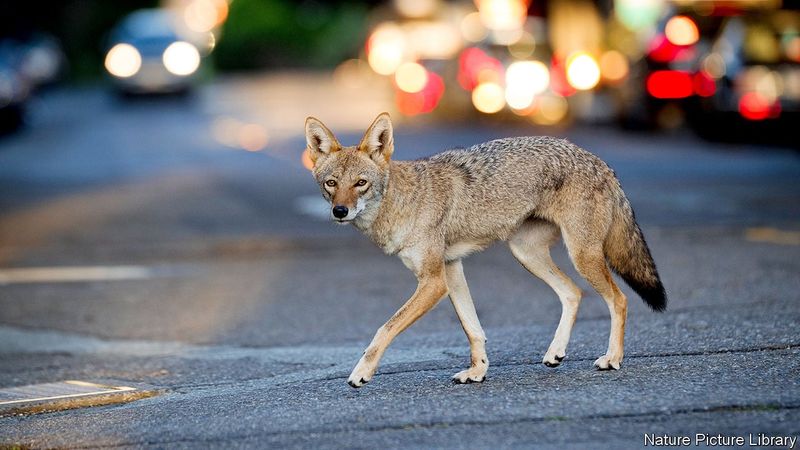
Coyotes are the quintessential survivors of the modern world. Once restricted to the open plains, these adaptable canines now thrive in rural, suburban, and even urban settings. Known for their eerie howls, they often go unnoticed despite their proximity to human habitation.
Their diet is as varied as their habitats, including everything from rodents to discarded food. This adaptability ensures their continued survival in changing landscapes. Coyotes have become a symbol of resilience, capable of carving out a niche in the most unlikely places.
Eastern Indigo Snake
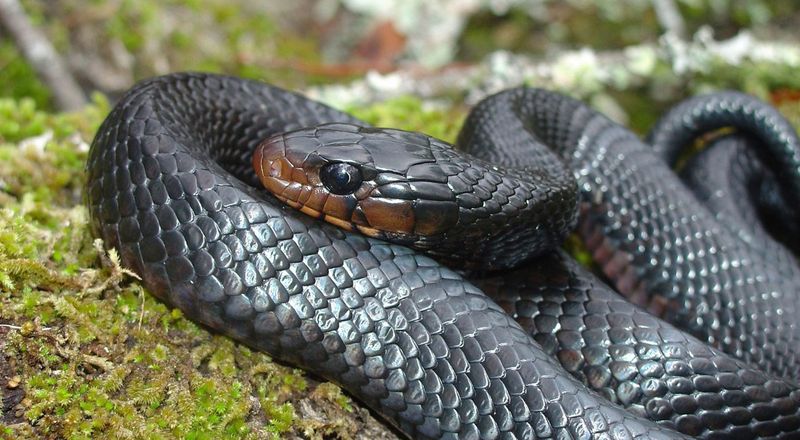
The eastern indigo snake, with its iridescent blue-black scales, is the longest native snake species in the U.S. Found in the southeastern states, it inhabits a variety of environments, from pine forests to swamps. These non-venomous snakes are vital for controlling rodent and venomous snake populations.
Indigo snakes are known for their docile nature, often fascinating snake enthusiasts. Their conservation is critical as habitat loss threatens their numbers. They reflect the hidden beauty of the southern ecosystems, often overlooked yet undeniably important.
Burrowing Owl

Burrowing owls are unique among their kind, choosing to nest underground rather than in trees. Found in grasslands and deserts, these diminutive birds are known for their striking yellow eyes and distinctive bobbing motions. Their daytime activity sets them apart from other owls.
These owls are often seen standing sentinel at their burrow entrance, a charming sight for wildlife watchers. Habitat loss poses a threat, but conservation efforts aim to protect their nesting areas. They bring a touch of whimsy to the plains.
Wolverine

The wolverine, a solitary and powerful predator, is a symbol of strength and endurance. Found in the remote northern forests and mountains, these elusive creatures are rarely seen but leave a profound impact on their ecosystems. Known for their voracity and tenacity, wolverines are capable hunters and scavengers.
Their territory spans vast areas, requiring large tracts of wilderness to thrive. Human encroachment and climate change threaten their habitats. Wolverines embody the rugged spirit of the wild, a creature of myth and admiration.
Northern Flying Squirrel
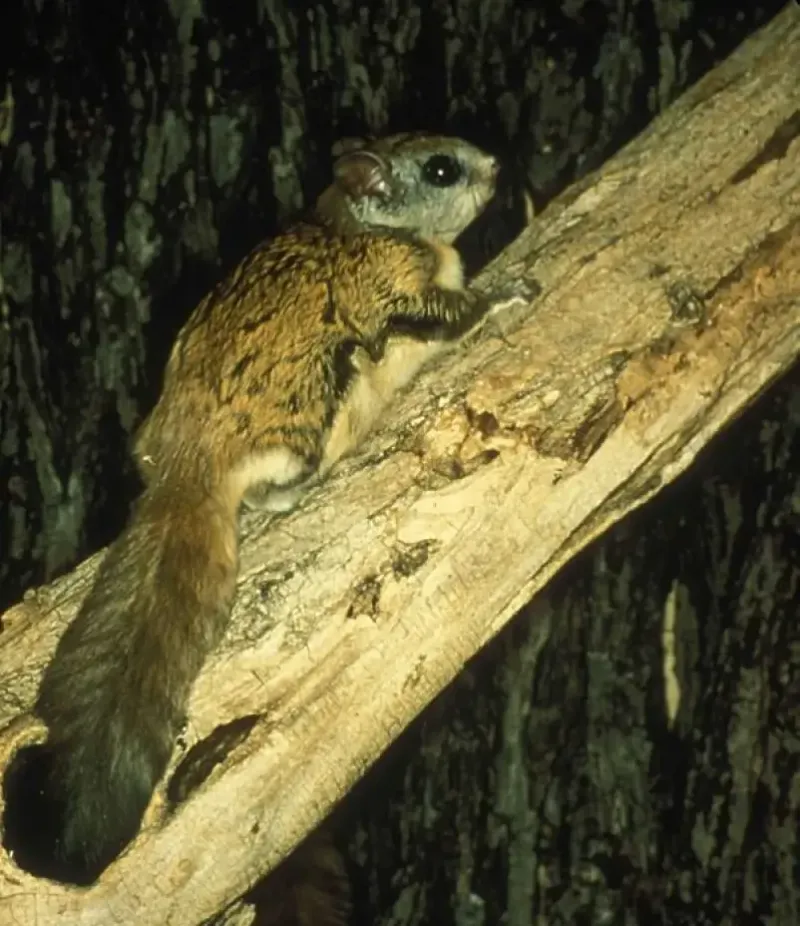
The northern flying squirrel is a nocturnal acrobat, gliding through the forest canopy with ease. Its large eyes and soft, grey-brown fur lend it an endearing appearance. Despite its name, it doesn’t fly but uses a skin membrane, called a patagium, to glide from tree to tree.
Inhabiting the dense woodlands of the northern U.S., these squirrels are crucial for spreading fungal spores that benefit tree growth. They remind us of the intricate dependencies in ecosystems, unseen yet essential for forest health.
Monarch Butterfly
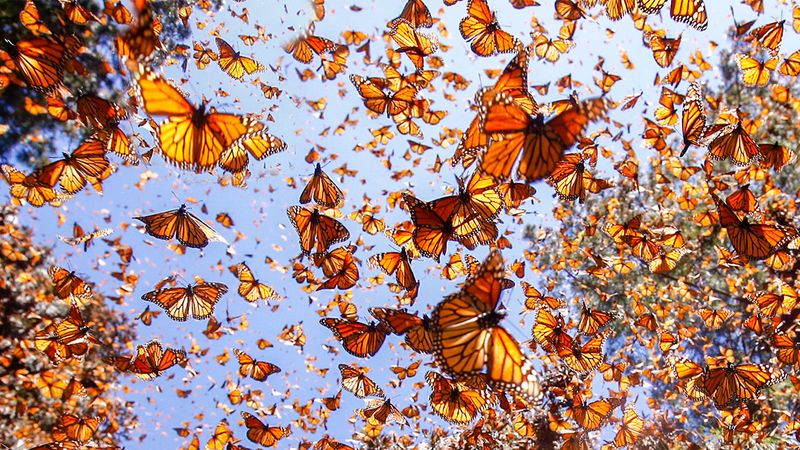
The monarch butterfly is a marvel of migration, traveling thousands of miles from the U.S. to central Mexico for the winter. Its vibrant orange and black wings are iconic, serving as a warning to predators of its toxicity. These butterflies rely on milkweed plants for laying eggs and feeding caterpillars.
Habitat loss and climate change pose significant threats to their migratory routes. Conservationists work tirelessly to protect these pathways. Monarchs are a symbol of transformation and resilience, their journey a testament to nature’s wonders.
Pacific Fisher
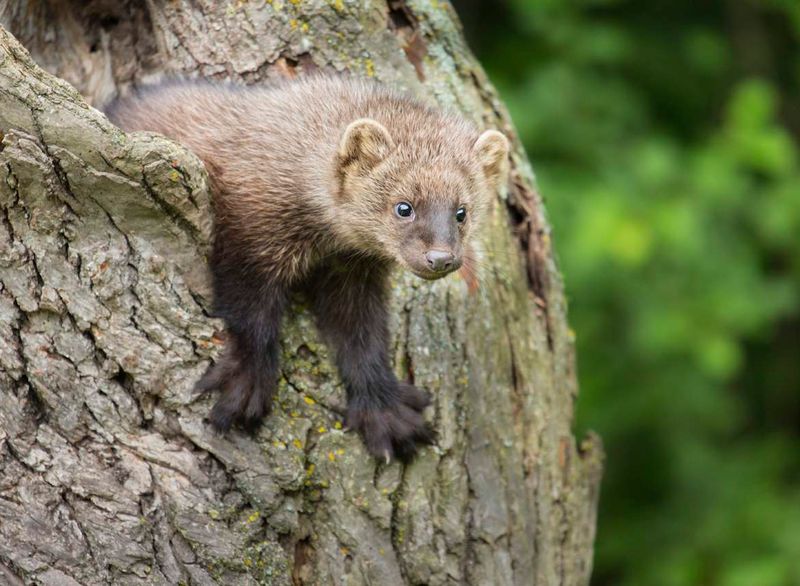
The Pacific Fisher, with its slender body and rich, dark fur, is a master of the forest canopy. Found mainly in the Pacific Northwest, this elusive creature is both an agile climber and a skilled hunter.
It navigates the treetops with ease, using its sharp claws and keen senses. Despite its name, the Pacific Fisher rarely eats fish. Instead, it prefers small mammals and birds.
Did you know? This creature plays a vital role in controlling prey populations, making it an essential component of its ecosystem. Its presence is a true testament to the wild beauty of U.S. forests.

